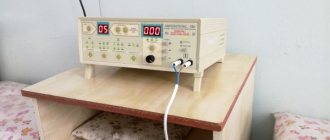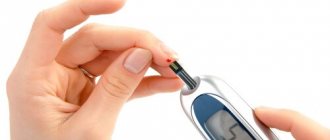Cystoscopy of the bladder is the examination of the walls of the urethra, bladder, and ureteric outlets.
The study is carried out using special optics to diagnose various changes and diseases.
During the procedure, the doctor has the opportunity not only to identify the pathology, but also to perform a biopsy to take a biopsy sample and, if foci of the disease are identified, to carry out therapeutic measures in the form of administering medications.
The study is also unique because, thanks to it, the doctor examines the organ cavities, but also evaluates the condition of the kidneys based on the specific discharge from the ureters.
We can say that this opportunity becomes an auxiliary diagnostic method for identifying prostate pathologies.
But this plays a special role when preparing an operation to remove a kidney, when the condition of the remaining one will be decisive.
When is it carried out?
There is no age limit for conducting the study. Therefore, it is the main method for identifying certain diseases of the genitourinary system, due to its high information content.
Other methods, for example, ultrasound, although safer, do not provide the doctor with sufficient information.
In addition, as we noted above, during the course of this study, a biopsy can be performed for subsequent histological analysis.
If stones, tumors, or polyps are found during the examination, they can be destroyed and removed.
Having discovered ulcerative pathologies of the organ mucosa, the doctor cauterizes the damaged areas.
As for tumors in the prostate and inflammation in it, using research, the doctor determines how the process has spread to neighboring tissues, sees a picture of the specific involvement of the organ and urethra in the disease process.
Indications and contraindications
The study is carried out for both diagnostic and therapeutic purposes. In the first option, it is carried out in a number of cases, including:
- Often worsening cystitis;
- Suspicion of a neoplasm;
- Overactive bladder;
- Chronic pain syndrome in the pelvic area;
- Detection of atypical cells in urine;
- Dysfunction when urinating - pain, difficulty, etc.
How is the treatment study indicated for:
- Excision of tumors;
- Neutralization of bleeding;
- Destruction and extraction of stones;
- Biopsies;
- Administration of medications.
In addition to the above, the procedure helps restore urinary tract patency.
The study is contraindicated if the patient has manifestations of inflammation of the genitourinary organs, as well as in case of damage to the urethra.
Bladder stones and their endoscopic treatment. Modern view of the problem
Ivanov V.Yu., Malkhasyan V.A., Semenyakin I.V., Pushkar D.Yu.
Bladder stones have caused suffering to people for centuries. Some doctors of ancient times, such as Hippocrates and Ammonius of Alexandria, were able to diagnose and tried to treat bladder stones [1]. The oldest bladder stone studied by scientists belonged to a boy who lived in Ancient Egypt more than 7,000 years ago [2].
Insufficient intake of vitamins A, B6, magnesium, in combination with a low-protein diet, is one of the pathogenetic factors in the formation of stones in the urinary tract [3]. Therefore, the improvement in the quality of nutrition that has occurred in the last century and the use of modern antibacterial therapy has led to a significant decrease in the number of patients with bladder stones in developed countries, where they currently account for about 5% of all stones in the urinary system [4]. These changes also led to the fact that bladder outlet obstruction and urinary infection became the dominant etiological factor in the formation of bladder stones. At the same time, A. Trinchieri et al. in their study demonstrated that changes in socioeconomic factors lead not only to changes in the incidence of urolithiasis, but also cause changes in the physical properties and chemical composition of stones, including those in the bladder [5]. Significant changes in the treatment of patients with bladder stones occurred about 50 years ago in parallel with the development of endourology, and since then the tactics have remained unchanged. Currently, endoscopic removal of bladder stones is the most common treatment option [6]. Clinical manifestations in the presence of bladder stones are well known, but perhaps the changes described above also changed the clinical picture of this disease.
Unfortunately, there are only a few modern studies on this issue, which is undoubtedly due to the sharp decrease in the number of these patients in developed countries. The purpose of our study was to obtain current characteristics of patients suffering from bladder stones, as well as to evaluate the results of endoscopic treatment in a modern urology department.
MATERIALS AND METHODS
Our prospective study included 79 patients who underwent endoscopic removal of bladder stones during 2021 in the urology departments of the University Hospital of Moscow State Medical University. The following information was collected about patients: gender, age, clinical manifestations, intercurrent diseases, body mass index (BMI), radiological data studies on the size and number of stones, the type of surgical interventions associated with lithotripsy, complications of surgical treatment and length of hospitalization.
Ultrasound examination of the bladder and plain urography were used to confirm the presence of a bladder stone and determine its size.
All operations were performed under spinal anesthesia by different surgeons. Endoscopic equipment from Storz and Olimpus was used. When the stone size was up to 1.5 cm, mechanical lithotripsy was mainly used. For larger stones, combined mechanical and laser Ho:Yag lithotripsy with the Lumenis® laser was used.
Statistical data processing was performed in Microsoft Excel®. Descriptive statistics for quantitative data with a symmetric distribution are presented as the arithmetic mean with normal deviation, for data with an asymmetric distribution as a median with an interquartile range. Qualitative data are presented as absolute and relative values. To determine the statistical significance of the data, a confidence interval for the proportion was calculated.
RESULTS
The mean age of the patients was 67.7±11.9 years (min. 28 years, max. 88 years. CI: 65.2-70.4 years). Of the 79 patients, 76 (96.2%, CI: 89.4%-98.7%) were men, three (3.8%, CI: 1.3%-98.7%) were women. Detailed characteristics of the patients included in the study are presented in Table 1.
Table 1. Characteristics of patients included in the study
| Indicators | Quantity (share) | 95% confidence interval |
| Total | 79 | 79 |
| Floor | ||
| Husband. | 76 (96,2%) | 89,4%-98,7% |
| Women's | 3 (3,8%) | 1,3%-10,6% |
| Age | 67,7±11,87 | |
| Duration of the disease | ||
| less than 1 year | 15 (81%) | 11 %-29% |
| more than 1 year | 84 (19%) | 71%-88,1% |
| Etiology | ||
| BPH | 53 (67,1%) | 51,1 %-76,4% |
| Sclerosis ShMP | 7 (8,9%) | 4,4%-17,4% |
| PCa | 6 (7,6%) | 3,5%-15,6% |
| Neurogenic MP | 4 (5,1%) | 2%-12,3% |
| Mesh prosthesis | 3 (3,8%) | 1,3%-10,6% |
| Urethral stricture | 3 (3,8%) | 1,3%-10,6% |
| MP diverticulum | 2 (2,5%) | 0,7%-8,8% |
| Long-term drainage of MP | 1 (1,3%) | 0,2%-6,8% |
| Previous urinary tract surgeries | 27 (34,2%) | 24,7%-45,2% |
| Recurrent MP stones | 10 (12,7%) | 7%-21,8% |
| Maximum stone size, mm | 22,8±9,065 | 19,76-24,4 |
| Multiple stones | 23 (29,1%) | 20,3%-29,9% |
| Availability of cystostomy drainage | 10 (12,7%) | 7%-21,8% |
| Body Mass Index (BMI) | 28,7±5,8 | 27,13-30,28 |
| Accompanying illnesses | ||
| No | 25 (35,2%) | 25,1%-46,8% |
| IHD | 27 (34,2%) | 24,7%-45,2% |
| Hypertonic disease | 33 (41%) | 30,8%-52,1% |
| History of stroke | 2 (2,5%) | 0,07%-8,8% |
| Heart failure | 8 (10,1%) | 5,2%-18,7% |
| Heart rhythm disturbance | 6 (7,6%) | 3,5%-15,6% |
| History of ICD | 10 (12,7%) | 7%-21,8% |
| Alzheimer's disease | 1 (1,3%) | 0,2%-6,8% |
| Stomach ulcer | 2 (2,5%) | 0,7%-8,8% |
The most common complaints were: frequent urination in 51 (64.6%, CI: 53.6%-74.2%) patients, difficulty urinating in 49 (62%, CI: 51%-71.9), painful urination was noted 39 (40.5%, CI: 30.4%-51.5%), hematuria was observed in 30 (38%, CI: 28.1%-49%). The duration of complaints for more than a year was noted in 64 patients (81%, CI: 71%-88.1%). Details of the clinical manifestations of the disease in patients included in the study are shown in Table 2.
Table 2. Clinical symptoms in patients with bladder stones included in the study
| Indicators | Quantity (share) | 95% confidence interval |
| Difficulty urinating | 49 (62%) | 51%-71,9% |
| Painful urination | 39 (40,5%) | 30,4%-51,5% |
| Frequent urination | 51 (64,6%) | 53,6-74,2 |
| Feeling of incomplete emptying of bladder | 11 (13,9%) | 8%-23,2% |
| Weakening of the urine stream | 12 (15,2%) | 8,9%-24,7% |
| Urgency | 3 (3,8%) | 1,3%-10,6% |
| Urinary incontinence | 1 (1,3%) | 0,2%-6,8% |
| Hematuria | 30 (38%) | 28,1%-49% |
Ten patients (12.7%, CI: 7%-21.8%) had previously undergone cystostomy. 27 patients (34.2%, CI: 24.7%-45.2%) had previously undergone surgery on the upper urinary tract, and 10 (12.7%, CI: 7%-21.8%) patients had previously A stone has already been removed from the bladder. 23 (29.1%, CI: 20.3%-29.9%) were diagnosed with multiple bladder stones. The mean stone size was 22.8±9.07 mm (min: 5 mm, max: 45 mm CI: 19.76-24.4).
The etiological causes of bladder stone formation were: in 53 patients (67.1%, CI: 51.1%-76.4%) - benign prostatic hyperplasia (BPH), in 7 (8.9%, CI: 4. 4%-17.4%) - sclerosis of the bladder neck, 6 (7.6%, CI: 3.5%-15.6%) - prostate cancer, 4 patients (5.1%, CI: 2%-12.3%) neurogenic bladder, 3 (3.8%, CI: 1.3%-10.6%) - urethral stricture, 2 (2.5%, CI: 0.7% -8.8%) — bladder diverticulum, in 1 patient (1.3% CI: 0.2%-6.8%) the cause was prolonged drainage of the bladder. In all three women (3.8%, CI: 1.3%-10.6%) included in the study, the cause of stone formation was protrusion of a mesh prosthesis into the bladder after undergoing pelvic floor surgery.
Only 25 patients (35%, CI: 25.1%-46.8%) had no significant concomitant diseases, 21 patients (26.6%, CI 18.1%-37.2%) had two or more concomitant diseases diseases. The most common comorbidity was hypertension, which was noted in 32 (41%, CI: 30.8%-52.1%) patients. The average BMI was 28.7±5.8 mm. (CI: 27.13-30.28 mm).
In addition to cystolithotripsy (CLT), 52 (65.8%, CI: 54.75%-75.3%) patients underwent transurethral resection of the prostate (TURP), 18 patients (22.8%, CI: 14.9% -33.2%) no additional interventions were performed, and only CLT was performed due to the fact that no anatomical changes were identified that could lead to stone formation. 4 patients (5.1%, CI: 2%-12.3%) underwent transurethral resection of the bladder neck, and two (2.5%, CI: 0.7%-8.8%) underwent internal optical urethrotomy . The average operation time was 67.7±31.77 minutes. (min. - 20, max. - 160 min., mode - 60 min., CI: 57.8-73.6). The majority of patients - 66 people (83.5%, CI: 73.9%-90.1%) - had no intraoperative or postoperative complications. The most common complication was conversion and cystolithostomy, which was performed in 5 patients (6.3%, CI: 2.7%-14%). Detailed characteristics of complications are presented in Table 3. Our Spearman correlation analysis did not reveal a relationship between the probability of conversion and the patient’s age (p = 0.29), patient’s BMI (p = 0.648), but a positive correlation was identified with the size of the stone (p = 0.039 ). According to the Clavien classification of surgical complications, 6 (7.6%, CI: 3.5%-15.6%) patients had grade IIIb complications, 5 (6.3%, CI: 2.7%-14% ) - grade IVa, one (1.3%, CI 0.02%-6.8%) - grade II.
Table 3. Type and complications of surgical intervention in patients included in the study
| Type of operation | Quantity(share) | 95% confidence interval |
| VOUT + CLT | 2 (2,5%) | 0,7%-8,8% |
| TURP+CTL | 52 (65,8%) | 54,75%-75,3% |
| TURSHMP+TSLT | 4 (5,1%) | 2,0%-12,3% |
| TURUSHA + CLT | 2 (2,5%) | 0,7%-8,8% |
| TURMP + CLT | 1 (1,3%) | 0,2%-6,8% |
| CLT | 18 (22,8%) | 14,9%-33,2% |
| Operation duration | 67,7+-31,77 | 57,8-73,6 |
| Complications of the operation | ||
| OZM | 1 (1,3%) | 0,2%-6,8% |
| OKS | 2 (2,5%) | 0,7%-8,8% |
| TUR syndrome | 1 (1,3%) | 0,2%-6,8% |
| Delirium | 1 (1,3%) | 0,2%-6,8% |
| Conversion | 5 (6,3%) | 2,7%-14% |
| Arrhythmia | 1 (1,3%) | 0,2%-6,8% |
| MP perforation | 1 (1,3%) | 0,2%-6,8% |
| No | 66 (83,5%) | 73,9%-90,1% |
The median length of hospitalization was 7 days (interquartile range 2–9 days).
DISCUSSION
In adult patients, bladder stones rarely occur spontaneously and are mainly caused by predisposing factors such as bladder outlet obstruction, urinary tract infection, and a foreign body in the bladder lumen [4]. It follows that the primary etiological cause must be identified and eliminated to avoid relapse. In men, diseases such as BPH, urethral stricture, bladder diverticulum, and neurogenic bladder are associated with the formation of bladder stones.
According to R. Douenias et al. bladder outlet obstruction may be the cause of the formation of more than 75% of bladder stones [7], which, according to classical recommendations, dictates mandatory surgical treatment of BPH in the presence of bladder stones. In our study, the most common etiological factor was BPH, which was detected in 67% of patients, and the most common operation associated with lithotripsy was TURP, which was performed in 65.8% of patients. A number of studies question the role of bladder outlet obstruction as the sole factor in the formation of bladder stones. So in the work of F. Millan-Rodriguez et al. In 18% of patients with bladder stones, no abnormalities were detected during urodynamic examination [8]. Indirect confirmation of the lack of influence of bladder outlet obstruction on the development of bladder stones is the fact that only 1-2% of patients with BPH have bladder stones [7]. For example, in a study by WK Mebust et al. It was noted that out of 3885 patients who underwent transurethral resection of the prostate gland, only 3% had indications for a combined operation aimed at getting rid of bladder stones [9]. Our study confirms the fact that bladder outlet obstruction is not the only cause of bladder stone formation. In 18 (22.8%) patients included in the study, no anatomical reason for the formation of bladder stones was identified intraoperatively and they underwent only cystolithotripsy.
Probably, the formation of bladder stones occurs due to a combination of factors of bladder outlet obstruction and dysmetabolic disorders. However, in the study by WM Li et al. demonstrates the superior influence of local factors of stone formation over systemic ones in patients with bladder stones. This study analyzed groups of patients with uric acid stones located in the upper urinary tract and bladder. Thus, in the group of patients with stones localized in the bladder, there was a lower level of creatinine and uric acid in the blood plasma and a higher incidence of bladder outlet obstruction compared to patients with stones localized in the upper urinary tract [10].
Patients with a neurogenic bladder are at high risk of developing bladder stones. Thus, according to JH Ku et al., bladder stones were detected in 28% of patients with spinal cord injuries [11]. In our study, neurogenic bladder was the cause of bladder stones in 4 patients (5.1%).
Prolonged drainage of the bladder is also a factor in the formation of bladder stones. In a study by A.A. Khan et al. An analysis of the results of long-term bladder drainage in 260 patients was performed. In 147 (55.5%) of them, signs of drainage encrustation were detected and these patients underwent fibrocystoscopy, during which bladder stones were identified in 66 patients (45%) [12]. Also in the study by J. Ord et al. When observing 457 patients with neurogenic bladder, it was noted that the risk of developing bladder stones in the presence of long-term bladder drainage was 4%, and only 0.2% with intermittent catheterization; the authors found no difference in the incidence of bladder stones in patients with an indwelling urethral catheter and suprapubic cystostomy drainage [13]. In our study, the presence of cystostomy drainage was noted in 10 (12.7%) patients, and in one patient, long-term bladder drainage with a permanent urethral catheter was the leading etiological factor.
An important etiological factor in the formation of bladder stones is urinary tract infection. An increase in urine pH promotes the aggregation of magnesium ammonium phosphate and apatite carbonate crystals. A number of studies link the formation of urinary stones with infection of the urinary tract by urease-producing microorganisms [14,15]. Indirect confirmation of the importance of the infectious process in the formation of bladder stones in our study is the fact that 32.4% of patients had previously undergone surgical interventions on the urinary tract, and 12.7% had recurrent bladder stones.
In women, bladder stones are mainly of a secondary nature and can be caused by pelvic organ prolapse, neurogenic bladder dysfunction, or the presence of a foreign body in the bladder. Recently, the number of operations using mesh synthetic prostheses for urinary incontinence and pelvic organ prolapse has increased significantly. Protrusion of the mesh prosthesis into the bladder is one of the complications of these operations. In a study by I. Levin et al. It was noted that the frequency of intravesical protrusion of a synthetic loop after TVT surgery is 5.1% [16]. The presence of synthetic material in the lumen of the bladder can lead to encrustation and the formation of bladder stones. There are a small number of publications devoted to this issue, presented mainly by descriptions of clinical cases. M. Blewniewski et al. describe protrusion of the mesh prosthesis and the formation of bladder stones after TVT surgery in 6 patients. The patients underwent successful laser lithotripsy and simultaneous extraction of the cystic fragment of the synthetic loop, but the authors do not reflect the results of follow-up of these patients [17]. In our study, in all three women with bladder stones, the etiological factor was protrusion of the mesh prosthesis. The patients also underwent laser cystolithotripsy and transurethral removal of an implant fragment. However, our experience shows that all these women subsequently underwent repeated interventions associated with recurrent protrusion or recurrent stone formation. Therefore, the problem of such bladder stones is very relevant and requires detailed research.
One of the etiological reasons for the formation of bladder stones is the migration of stones from the upper urinary tract. Thus, in a study by FT Hammad et al. 33% of patients with bladder stones had anamnestic indications of renal colic [18]. In our study, only 12.7% of patients had anamnestic indications of the presence of stones in the upper urinary tract, so this factor is not significant in patients living in Moscow.
A typical symptom in the presence of bladder stones is frequent and painful urination, which can occur in 40-50% of patients. 30-40% of patients may experience intermittent urination [19]. One of the characteristic symptoms is terminal hematuria. According to research by V.A. Malkhasyan et al., performed in 2021, bladder stones were diagnosed in 3.7% of patients who sought hospital care in Moscow for hematuria [20]. In our study, hematuria was noted in 30% of patients, and the most common complaints were frequent and difficulty urinating, which were noted in 51% and 49% of patients, respectively.
It is believed that the decrease in the number of patients with bladder stones in developed countries is associated not only with changes in the quality of nutrition, but also with increased patient awareness, availability of medical care and early treatment of bladder outlet obstruction that has occurred. However, our study revealed that in the majority of patients (81%) the duration of the disease was more than one year. This circumstance may indicate inadequate monitoring of patients with chronic bladder outlet obstruction and insufficient regularity of examinations in these patients. Insufficient effective monitoring of patients with bladder outlet obstruction is indicated by the fact that out of 589 patients who underwent TURP in our clinic during the specified period, 52 had bladder stones (8.8% CI 6.7%-11. 4%) of patients, while according to a multicenter European study, only 3% of patients who underwent TURP had bladder stones [9].
There are many methods of surgical treatment of bladder stones, including extracorporeal shock wave lithotripsy, transurethral and percutaneous cystolithotripsy and cystolithotomy. Each method has its own advantages and disadvantages. The choice of surgical treatment method is determined by the availability of equipment, the qualifications of the surgeon, the condition of the patients (age, comorbid status), and the characteristics of the stone (size and density)[21]. Clinical guidelines of the European Association of Urology consider the presence of bladder stones as an absolute indication for surgical treatment of BPH [22]. Currently, the most common surgery for BPH is TURP [23]. Therefore, transurethral access to a bladder stone is the most attractive and is the most common in our time, as it allows not only to rid the patient of the stone, but also to simultaneously eliminate the cause of bladder outlet obstruction. We did not find any literature indicating the effectiveness and incidence of complications when performing combined TURP and cystolithotripsy. But according to O. Reich et al. the rate of complications with TURP is about 11% [23]. According to the results of S. Mandal et al. the bulk of complications (90%) belonged to groups I, II and III according to the Clavien classification [24]. A number of studies indicate that the incidence of complications with cystolithotripsy ranges from 9-25% [25,26]. In our study, 11 (13.9%) patients had complications III and IV according to the Clavien classification. The most common complication was the need for conversion and cystolithostomy. We confirmed the relationship between the size of the stone and the likelihood of conversion.
Currently, several methods have been proposed that increase the effectiveness of cystolithotripsy - the use of a nephroscope passed into the bladder both transurethrally and through percutaneous access. The use of a nephroscope allows the use of an ultrasonic and pneumatic lithotripter and the removal of large fragments of stones through the nephroscope tube using forceps. So in the study by K. Ener et al. with transurethral use of a nephroscope, the average operation time was 48.2±13.2 minutes, and when performing standard cystolithotripsy through a cystoscope, 68.1±22.7 minutes [27]. In a study by A. Bansal et al. demonstrates that cystolithotripsy performed transurethrally with a nephroscope has an advantage in terms of time spent on surgery compared to standard cystolithotripsy and when using a nephroscope through a percutaneous approach. Upon further observation, the formation of urethral stricture was noted in 3.2% of patients who underwent standard cystolithotripsy, in 7.8% of patients who underwent transurethral cystolithotripsy using a nephroscope, and in patients who underwent percutaneous cystolithotripsy, the development of urethral stricture was not observed [28]. Our clinic has experience in performing similar operations for large bladder stones, but we did not include these operations in this analysis, since they are the subject of our subsequent studies.
CONCLUSION
Bladder stones remain a pressing problem in modern urology. Our study did not reveal significant differences in the socio-demographic and clinical characteristics of patients compared to data published in the world press over the past 30 years. The leading etiological factor of stone formation is infravesical obstruction. However, we noted an almost threefold increase in the proportion of patients with bladder stones operated on for BPH compared with data from a multicenter European study. This fact, along with the fact that most patients were operated on more than a year after the appearance of characteristic complaints, indicates the insufficient effectiveness of outpatient monitoring of patients with bladder outlet obstruction.
Transurethral cystolithotripsy remains the main treatment method for bladder stones with proven high efficacy and safety.
Our analysis reveals a number of important questions that require further research to answer. These issues include the development of bladder stones and their treatment tactics in patients who have undergone pelvic floor plastic surgery using mesh implants; a relatively high incidence of recurrent bladder stones and a higher incidence of patients with bladder stones who had previously undergone urinary tract interventions. Our study suggests that patients with bladder outlet obstruction who have previously undergone urinary tract surgery and have a history of stones in the upper urinary tract are at risk for the formation of bladder stones. Careful outpatient monitoring of these patients will allow for a timely diagnosis and provide them with medical care as soon as possible.
LITERATURE
1. Shelley HS. Cutting for the stone. J Hist Med Allied Sci 1958;13(1):50-67.
2. Riches E. The history of lithotomy and lithotrity Ann R Coll Surg Engl 1968; 43(4):185-199.
3. Ali SH, Rifat UN. Etiological and clinical patterns of childhood urolithiasis in Iraq. Pediatr Nephrol 2005;20(10):1453-1457. doi:10.1007/s00467-005-1971-0.
4. Schwartz BF, Stoller ML. The vesical calculus. Urol Clin North Am 2000;27(2):333-346.
5. Trinchieri A. Epidemiology of urolithiasis. Arch Ital di Urol Androl Organo Uff 1996;68(4):203-249.
6. Papatsoris AG, Varkarakis I, Dellis A, Deliveliotis C. Bladder lithiasis: from open surgery to lithotripsy. Urol Res 2006; 34(3):163-167. doi:10.1007/s00240-006-0045-5.
7. Douenias R, Rich M, Badlani G, Mazor D, Smith A. Predisposing factors in bladder calculi: review of 100 cases. Urology. 1991;37, (3):240-243. doi: 10.1016/0090-4295(91)80293-G.
8. Millan-Rodriguez F, Errando-Smet C, Rousaud-Baron F, Izquierdo-Latorre F, Rousaud-Baron A, Villavicencio-Mavrich H. Urodynamic findings before and after noninvasive management of bladder calculi. BJU Int 2004;93(9):1267-1270. doi: 10.1111/j.1464-410X.2004.04815.x.
9. Mebust WK, Holtgrewe HL, Cockett ATK, Peters PC. Transurethral prostatectomy: immediate and postoperative complications. a cooperative study of 13 participating institutions evaluating 3,885 patients. 1989. J Urol 2002;167(2 Pt 2):999-1003.
10. Li WM, Chou YH, Li CC, Liu CC, Huang SP, Wu WJ, et al. Local factors compared with systemic factors in the formation of bladder uric acid stones. Urol Int 2009;82(1): 48-52. doi: 10.1159/000176025.
11. Ku JH, Jung TY, Lee JK, Park WH, Shim HB. Risk factors for urinary stone formation in men with spinal cord injury: a 17-year follow-up study. BJU Int 2006;97(4):790-793. doi: 10.1111/j. 1464-410X.2006.0 5991.x.
12. Khan AA, Mathur S, Feneley R, Timoney AG. Developing a strategy to reduce the high morbidity of patients with long-term urinary catheters: the BioMed catheter research clinic. BJU Int 2007;100(6):1298-1301. doi: 10.1111/j. 1464-410X.2007.07146.x.
13. Ord J, Lunn D, Reynard J. Bladder management and risk of bladder stone formation in spinal cord injured patients. J Urol 2003;170(5):1734-1737. doi: 10.1097/01.ju.0000091780.59573.fa.
14. Schaffer JN, Norsworthy AN, Sun TT, Pearson MM. Proteus mirabilis fimbriae- and urease-dependent clusters assemble in an extracellular niche to initiate bladder stone formation. Proc Natl Acad Sci 2016;113(16):4494-4499. doi: 10.1073/pnas.1601720113.
15. Satoh M, Munakata K, Kitoh K, Takeuchi H, Yoshida O. A newly designed model for infection-induced bladder stone formation in the rat. J Urol 1984;132(6):1247-1249.
16. Levin I, Groutz A, Gold R, Pauzner D, Lessing JB, Gordon D. Surgical complications and medium-term outcome results of tension-free vaginal tape: A prospective study of 313 consecutive patients. Neurourol Urodyn 2004;23(1):7-9. doi: 10.1002/nau.10164. 17. Blewniewski M, Markowski M, Klis R, Rozanski W. Cystolithiasis in women as a distant complication after minimal invasive treatment of stress urinary incontinence. Cent Eur J Urol 2014;67(3):277-281. doi: 10.5173/ceju.2014.03.art13.
18. Hammad FT, Kaya M, Kazim E. Bladder calculi: did the clinical picture change? Urology 2006;67(6):1154-1158. doi: 10.1016/j.urology.2005.12.038.
19. Menon M, Resnick MI. Urinary lithiasis: etiology, diagnosis, and medical management. In: Walsh PC, Retik AB, Vaughan ED, Wein AJ (eds) Campbell's urology. 8th edition. WB Saunders, Philadelphia, 2002. p. 3229.
20. Malkhasyan VA, Ivanov VYU, Khodyreva LA, Dudareva AA, Kupriyanov YuA, Redkovich VI, et al. Analysis of the provision of specialized medical care to patients with gross hematuria in urological hospitals in Moscow. Experimental and Clinical Urology 2016;(4):10-16.
21. Philippou P, Moraitis K, Masood J, Junaid I, Buchholz N. The management of bladder lithiasis in the modern era of endourology. Urology 2012;79(5):980-986. doi: 10.1016/j. urology.2011.09.014.
22. Oelke M, Bachmann A, Descazeaud A, Emberton M, Gravas S, Michel MC, et al. EAU Guidelines on the treatment and follow-up of non-neurogenic male lower urinary tract symptoms including benign prostatic obstruction. Euro Urol 2013; 64(1):118-140. doi: 10.1016/j.eururo.2013.03.004.
23. Reich O, Gratzke C, Bachmann A, Seitz M, Schlenker B, Hermanek P, et al. Morbidity, mortality and early outcome of transurethral resection of the prostate: a prospective multicenter evaluation of 10,654 patients. J Urol 2008;180(1):246-249. doi: 10.1016/j.juro.2008.03.058.
24. Mandal S, Sankhwar SN, Kathpalia R, Singh MK, Kumar M, Goel A, et al. Grading complications after transurethral resection of prostate using modified Clavien classification system and predicting complications using the Charlson comorbidity index. Int Urol Nephrol 2013;45(2):347-354. doi:10.1007/s11255-013-0399-x.
25. Bhatia V, Biyani CS. Vesical lithiasis: open surgery versus cystolithotripsy versus extracor-poreal shock wave therapy. J Urol 1994;151(3):660-662.
26. Razvi HA, Song TY, Denstedt JD. Management of vesical calculi: comparison of lithotripsy devices. J Endourol 1996;10(6):559-563. doi: 10.1089/end.1996.10.559.
27. Ener K, Agras K, Aldemir M, Okulu E, Kayigil O. The randomized comparison of two different endoscopic techniques in the management of large bladder stones: transurethral use of nephroscope or cystoscope? J Endourol 2009;23(7):1151-1155. doi: 10.1089/end.2008.0647.
28. Bansal A, Kumar M, Sankhwar S, Goel S, Patodia M, Aeron R, et al. Prospective randomized comparison of three endoscopic modalities used in treatment of bladder stones. Riv Urol 2016;83(2):87-92. doi: 10.5301/uro.5000171
The article was published in the journal Experimental and Clinical Urology. Issue No. 3/2017 - pp. 44-50
Magazine
Journal "Experimental and Clinical Urology" Issue No. 3, 2017
Comments
Guest — 01/03/2018 — 02:08:07
My husband is 90 years old. At the age of 80, he was diagnosed with BPH and was prescribed alpha-blockers. He did not tolerate them well. After 5 years, stones were found in the bladder. The urologist (Kineshma) said that live with these stones; he reacted negatively to my persuasion to do lithotripsy or even surgery. She prescribed him cystinal, uralite U, cystone, phytolysin. ,magurlit. With this treatment, the stones only increased in size and only Rovatinex began to drive the stones away. In December, from 14 to 30, I was in the cardiac center of the Regional Hospital in the city of Ivanovo with a diagnosis of SSSU. An electrical pacemaker was implanted with a heart rate of 70 per minute. He was examined by a urologist, who recommended that in case of urinary retention, contact a urologist in Kineshma for a cystolithotomy with cystostomy. There is no need for hospitalization in the urology department of the Regional Clinical Hospital. Is this a way out? My husband is a WWII veteran, Art 17, and has been disabled for 2 years due to a general illness since July 2021. What do you recommend and what is the best way out of this situation?
Shaderkina Victoria Anatolyevna - 01/17/2018 - 15:45:01
Dear Nina Georgievna! Contact and ask your question on our advisory portal Nethealth.ru.
Kokorev Valery Serafimovich - 12/24/2017 - 23:19:08
Thanks for posting! One question: is it possible to remove a 0.9 mm bladder stone using a litholysis agent such as Cyston? Or is surgical removal necessary? Sincerely, Kokorev V.S.
To post comments you must log in or register
How to prepare
Preparing for the study cannot be called difficult. The patient undergoes a urine test and some other tests. This is necessary to exclude contraindications.
Medicines that are responsible for reducing the rate of blood clotting taken by the patient are usually eliminated several days before the test.
There should be no sexual contact on the eve of the study.
Men are examined using, as a rule, spinal or general anesthesia, due to their anatomical characteristics.
For women, the procedure is usually performed under local anesthesia, which is applied to the tube of the device (endoscope).
Before the procedure, you need to have a bowel movement and thoroughly clean your genitals.
Everyone, without exception, must stop eating twelve hours before and drink three hours before.
How to prepare for the examination
Cystoscopy does not require special preparation. If it is performed under anesthesia, then you need to abstain from food 10-12 hours before the appointed time. 3-4 hours before the procedure, you should avoid consuming any liquids. Since you cannot drive after anesthesia, you should arrive at the clinic in another way. If the examination of the bladder walls is carried out without anesthesia, it is enough to simply appear on an empty stomach.
Attention! Before the procedure, external toilet of the genital organs should be performed.
Carrying out
The subject undresses and lies on his back, legs bent at the knees. The doctor should explain to him how the procedure is performed and what sensations may arise during it.
The external genitalia are treated with an antiseptic, and the device is lubricated with glycerin.
Men are given anesthesia into the urethra using a special syringe, and wait for the analgesic effect to begin. This continues for up to 10 minutes.
Depending on the chosen toolkit, there are options:
- Harsh intervention;
- The intervention is flexible.
Rigid involves the use of a rigid device that is mounted on a metal tube. Such a device has pros and cons. On the one hand, it straightens the tissue well, which is important for examination; on the other hand, it is more traumatic and causes significant discomfort to the patient.
Do not use a rigid device during pregnancy or with significant tumors localized in the pelvic organs.
A tube of the device is inserted into the urethra and a liquid is supplied to wash and straighten the folds of the organ membrane.
In order to supply and drain liquid, a special tap is connected to the device. For better visualization, the organ should be washed before the study. The water used to rinse the organ is collected for later study.
Flexible research involves the use of a flexible instrument. This is a movable polymer tube, at the end of which there is a lamp and optics.
The device easily passes into hard-to-reach places, which increases the information content of the study, and also significantly minimizes the possibility of injury and pain.
The advantages of the flexible option are obvious, so in modern medical practice it is replacing the hard option.
For children, a flexible version of the procedure using a pediatric endoscope is indicated.
Study in women
Typically, the test is easier for women than for men. The reason for this is the peculiarity of the urethra, short and straight.
General anesthesia is not required; a local option is used: an anesthetic is applied to the device.
Difficulties may arise if there are significant tumors in the uterus and pregnancy in its later stages, when the bladder is compressed by the uterus.
It must be understood that the procedure in the second case is performed only for health reasons: there is a high probability of provoking a spontaneous abortion.
Study in men
The anatomical features of a man (the length of the urethra can reach over twenty centimeters) cause certain difficulties in conducting the study.
The physician is required to be highly qualified and accurate. Mainly, this plays an important role at the stage when the device is inserted.
An anesthesiologist must be present during the examination, as there may be a risk of severe pain when it is necessary to administer an anesthetic drug.
Biopsy
We will separately talk about the procedure for taking a biopsy for subsequent histological examination.
The biopsy is taken in several ways:
- Biopsy is cold. The material is removed using special forceps inserted through the device.
- TUR biopsy. This is cutting off a piece of tissue or completely removing the tumor using an electrocoagulator, which is also carried out through an endoscope.
Both methods have pros and cons.
With the cold option there is minimal risk of damage to the organ wall, but there is little information about the spread of the tumor.
Cholangiography
TUR biopsy, on the contrary, provides comprehensive information about the development of the tumor and negates the risk of bleeding. The downside of this option is the high risk of injury.
Urethrocystoscopy (cystoscopy of the bladder) at the Paracelsus clinic, Sergiev Posad
ATTENTION:
Online consultations with doctors (more than 18 specialties) are available.
Urethrocystoscopy (bladder cystoscopy)
is an instrumental method for endoscopic examination of the walls of the urethra, bladder and ureteric outlets in order to identify pathology. In addition to the fact that urethrocystoscopy is a diagnostic procedure, it also allows for targeted sampling of biomaterial (simultaneous biopsy) when pathological foci are detected and medication is administered.
At the Paracelsus Medical Center, urethrocystoscopy is performed by qualified urologists who will ensure comfort for each patient, and the manipulation will not take much time. To perform urethrocystoscopy, a urethroscope is used - a special endoscopic device. At the Urology Department of the Paracelsus Medical Center, you can undergo a urethrocystoscopy procedure quickly and painlessly. And the presence of high-precision equipment allows our urologists to examine the urethra in detail and accurately establish a diagnosis.
Complications
After the procedure, blood discharge may appear in the patient’s urine for several days.
Not excluded:
- Burning;
- Discomfort in the urethra;
- Pain when urinating.
To quickly resolve these symptoms, you need to consume plenty of fluids during the first few days.
Among the complications that may appear after the study are the following:
- Acute cystitis;
- Damage to the organ wall;
- Bleeding;
- Injury to the urethra, some others.
Possible complications
What happens after the end of cystoscopy?
If the subject has undergone anesthesia, he remains for several hours in the clinic under the supervision of an anesthesiologist. If the patient feels well, you can go home. He is preliminarily prescribed antibacterial drugs to prevent complications of cystoscopy in the form of exacerbation of cystitis.
For several days after the procedure, pink mucus will be released from the urethra, and pain will be felt during micturition. Drinking plenty of fluids will reduce it. This measure will reduce the concentration of urine and prevent irritation of the damaged urethral mucosa.
Attention! If after endoscopy you have a fever or blood begins to come out of your urethra, consult a doctor immediately.
You can conduct a cystoscopic examination at Medical. We perform it under anesthesia in the form of general anesthesia, spinal or local anesthesia. Therefore, all unpleasant sensations will be minimized.








